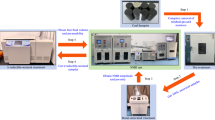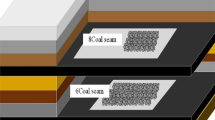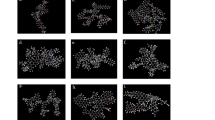Abstract
Maggs1 and Malherbe2, among others, have shown that coal behaves as a molecular sieve material. That is, the adsorption of nitrogen and argon at 77° K. is restricted because of activated diffusion into pores of molecular dimensions and gives data only on the readily accessible macropore area of coal. From heats of wetting and gas-adsorption data at higher temperatures, the macropore area is shown to represent an insignificant part of the total surface area of most coals.
This is a preview of subscription content, access via your institution
Access options
Subscribe to this journal
Receive 51 print issues and online access
$199.00 per year
only $3.90 per issue
Buy this article
- Purchase on SpringerLink
- Instant access to full article PDF
Prices may be subject to local taxes which are calculated during checkout
Similar content being viewed by others
References
Maggs, F. A. P., Nature, 169, 793 (1952).
Malherbe, P. Le R., Fuel, 30, 97 (1951).
Emmett, P. H., A.S.T.M. Tech. Pub., 51, 95 (1941).
Walker, jun., P. L., Foresti, jun., R. J., and Wright, C. C., Indust. Eng. Chem., 45, 1703 (1953).
Delvaux, Leon, M. S. thesis, Pennsylvania State University (1955).
Author information
Authors and Affiliations
Rights and permissions
About this article
Cite this article
WALKER, P., GELLER, I. Change in Surface Area of Anthracite on Heat Treatment. Nature 178, 1001 (1956). https://doi.org/10.1038/1781001a0
Issue date:
DOI: https://doi.org/10.1038/1781001a0



